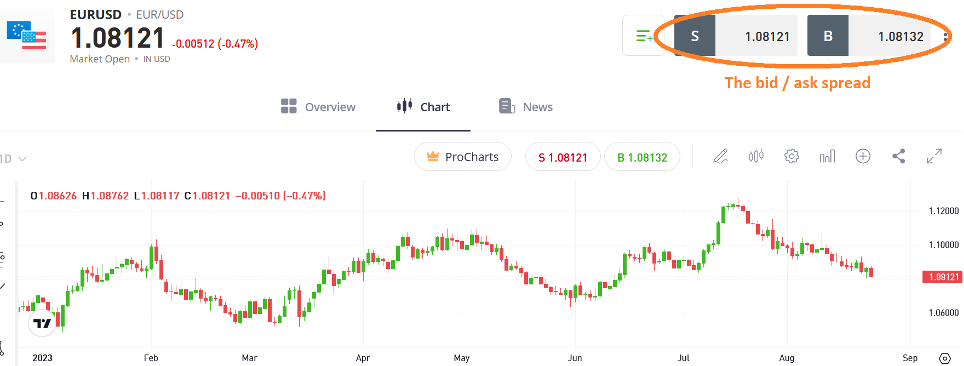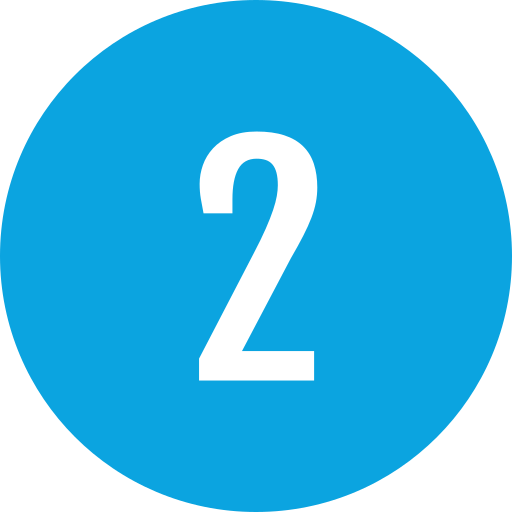- Home
- Forex Day Trading
Best Day Trading Platforms and Brokers in 2024

Written By
James Barra

Edited By
William Berg

Fact Checked By
Jemma Grist
Contracts for difference (CFDs) are popular among day traders who seek low-cost trading and leverage to enhance potential profits. CFDs are high-risk, high-reward derivatives in which traders speculate on price movements without owning the underlying asset.
This beginner’s guide to CFD day trading will explain how CFDs work, outline their pros and cons, and provide a step-by-step overview on how to get started.
A contract for difference is an agreement between two parties to pay the difference between the opening and closing price of an asset.
They are flexible instruments that allow traders to profit (or lose) from changes in asset values without having to own the underlying security.
A contract for difference is an agreement between two parties to pay the difference between the opening and closing price of an asset.
CFDs can be used to gain exposure to a variety of asset classes including stocks, commodities, forex and cryptocurrencies.
Traders have the option of opening both long and short positions, thus allowing them to make profits even when markets fall.
Top 4 forex Brokers in South Africa
These trustworthy brokers offer the best accounts for day trading forex in South Africa:
Download forextradingadvices.com’s Forex Day Trading PDF
What Is The Forex Market?
The foreign exchange (forex) market is the largest and most active financial market globally. It has expanded rapidly over recent decades, with daily trading volumes reaching an impressive $7.5 trillion, according to the Bank for International Settlements.
Some of the key participants in the forex market include:
- Banks and financial institutions, whose broad range of services include providing foreign exchange services, executing cross-border payments, and managing clients’ investments. Some banks also carry out their own speculative trades from in-house dealing desks.
- Central banks, who get involved to influence their own currency’s value and to meet their monetary policy targets.
- Multinational companies, who convert overseas profits into their domestic currencies and seek to hedge the risk associated with exchange rate movements.
- Hedge funds, which aim to profit from price movements and arbitrage opportunities (in other words price discrepancies across different markets).
- Retail traders, who – using the services of an online broker – speculate that the value of a currency will rise or fall in relation to another.
Speculators are by some distance the most active participants in currency trading. It is estimated that around 90% of daily volumes are driven by speculation rather than for practical purposes.
XE is a user-friendly platform for currency conversion and historical data.
What Is The Forex Market?
Currencies are traded in pairs. This means that when a day trader bets that a currency will rise in value against another, they are buying that counter (known as the base currency) and selling the other (known as the quote currency).
Conversely, if they think a currency will fall and therefore choose to go short, they will sell the base currency and buy the quote currency. Because a forex trade is a two-way transaction, a trader needs to have a good idea of the relationship between both currencies and what could drive their price dynamic.
The EUR/USD is a popular example of a currency pair. Here, the euro is the base currency and the US dollar is the quote currency. It indicates how many euros I can get for a single buck.
Let’s say that the EUR/USD currently sits at 1.1000. At current prices €500 would get me $550 (excluding any charges).
If a trader thinks the euro will appreciate against the dollar, they will open a position where they simultaneously go long on the euro and short the buck. If the exchange rate rises from 1.1000 they will make a profit.
Movements in currency pairs are measured in pips, which stands for ‘percentage in point’ or ‘price interest point.’ Like EUR/USD, the majority of pairs are quoted at four or five decimal places.
When searching for the price of a forex pair a trader will see two prices. These are the bid price, the price at which a trader can sell a forex pair, and the ask price, which is the price at which a trader can buy a currency pair.
The difference between these two prices is known as the spread. It is also measured in pips, and illustrates the profit a broker will make on a specific transaction. Day traders need to pay close attention to this: large spreads can eat into profits.

The above chart shows eToro’s bid and ask prices on the EUR/USD pairing. At the time of writing, the bid price sat at 1.08121 and the ask price at 1.08132. This resulted in a spread of 11 pips.
Ways To Day Trade Forex
There are two main ways that investors can day trade on the foreign currency market:
1) Spot Trading
This is the most popular way that forex traders operate. It involves trading one currency for another at the spot rate (in other words, the current exchange rate).
2) Derivatives Trading
Similar to other markets, this sees traders speculate on the movement of forex pairs without actually buying or selling any underlying assets.
Retail traders primarily use contracts for difference (CFDs) to do this. This type of instrument uses leverage, in other words, money borrowed from a forex trading platform. As a result, a trader is able to control a larger position with only a small amount of capital.
A Forex Trade In Action
After a short while the pair moves to 1.1057, resulting in a 57-pip gain. At this point Steve decides to exit his position, booking a profit of €518.18 in the process.
The profit he made can be worked out using the following calculation:
- Lot Size: 100,000
- Change In Exchange Rate: 1.1057 – 1.1 = 0.0057 (or 57 pips)
- Pip Value: (0.0001 / 1.1) * 100,000 = €9.0909
- Profit: €9.0909 * 57 pips = €518.18
Which Currencies Can You Day Trade?
There are 195 separate countries spanning the globe, and almost as many currencies are traded today. However, trading on forex markets is dominated by a handful of pairs, which – along with the EUR/USD – include:
- USD/JPY – the US dollar and Japanese yen
- GBP/USD – the British pound and US dollar
- USD/CHF – the US dollar and Swiss franc
- AUD/USD – the Australian dollar and US dollar
- USD/CAD – the US dollar and Canadian dollar
These forex pairs are known as the majors due to their high trading volumes, strong liquidity, and tight bid and offer spreads. In total, they account for more than 60% of all forex market trades.
As you can see, these pairings involve some of the world’s biggest and most influential economies. Their popularity is thanks in part to the economic and political stability in these countries. It is also because forex traders can locate key news and data for these territories more easily.
Major pairings are also so-called as they can be used by day traders, economists and market commentators to gauge the broader health of the world economy. They can provide a snapshot of the general mood of financial markets, too.
For example, the value of the US dollar, the Japanese yen and the Swiss franc are considered ‘safe haven’ currencies. They may therefore rise in value when the market is becoming nervous about the macroeconomic or geopolitical landscape.
On the other side of the coin sit the minor pairings. They are traded in much lower volumes and, as a consequence, they can have much wider bid and offer spreads than the majors.
Pairs that involve more exotic currencies – in other words, counters from smaller and/or less-developed economies – can also be highly volatile. Currencies from this category include the Turkish lira, Brazilian real and Polish złoty.
What Moves Currency Markets?
Global financial markets are closely connected. The relationship between foreign exchange, stocks, bonds, commodities and other markets is highly complex, and large movements in one market can have a marked impact on others.
Some of the wide range of factors that can drive currency pair movements include:
Interest Rate Changes & Monetary Policy Announcements
Central banks have the greatest influence on how the forex market moves. When interest rates rise in a country or economic area (like the eurozone), the local currency will attract more cash and rise against another that offers a lower return.
Interest rate meetings, and the accompanying minutes that can give clues on the future direction of borrowing rates, are therefore studied closely by the market.

Interest Rate Changes & Monetary Policy Announcements
A wide selection of economic data can shake the direction of currency pairings. Inflation, GDP, employment, retail sales, trade balances and purchasing managers’ index are major drivers of market prices.
Political news that affects certain countries, regions or the entire globe can also impact forex prices. These include elections, trade deals, referenda and policy announcements.
Economic and political developments can also shake up currency prices if they impact broader market sentiment. As mentioned, the likes of the US dollar can rise when traders and investors are feeling nervous. At the opposite end of the scale, currencies like the Australian dollar and South African rand – counters that are closely linked to commodity prices – can rise when risk appetite picks up.
Natural & Man-Made Disasters
Russia’s ruble, for example, dived in value against most currencies following the country’s shock invasion of Ukraine in 2022. The safe-haven Swiss franc rose against the US dollar following the 9/11 attacks, while Japan’s yen experienced broad-based weakness after the Fukushima nuclear plant disaster in 2011.
How To Start Day Trading Forex
To start day trading forex online follow these three steps:
- Learn how forex trading works. Our beginner-friendly guides and educational resources can help you understand the basics. We also recommend using a forex demo account to practice forex trading in a risk-free environment.
- Sign up with a forex broker. You will need to open a real-money account with a forex broker to start trading. We only recommend forex brokers for day trading that we trust and that offer reliable platforms, low fees, and excellent education for new currency traders.
- Build a strategy. To make money trading forex online you need to develop, test and refine a strategy. This will help you decide which currencies to trade, and when.
Pros & Cons Of Forex Day Trading
For retail investors, participating in the foreign exchange market carries a range of advantages and disadvantages. These include:
- Trades can be placed 24 hours a day, five days a week. This provides excellent flexibility and means participants don’t have to worry about things like exchange opening times.
- Most of the top forex day trading brokers offer a vast range of currency pairings to trade. More choice equals more opportunities to make a profit.
- High liquidity means that day traders can enter and exit positions quickly.
- The costs and fees associated with forex trading are usually much lower than those of other financial markets. In fact, some brokers operate on a ‘zero commission’ basis.
- Traders can get much higher levels of leverage through margin trading. This can amplify gains by providing a trader with more capital. But beware: it can also multiply losses if a trade goes wrong.
- Forex prices can be highly volatile and movements are hard to predict. Whilst this presents opportunities to make a profit, it can also open the door to losing a lot of money.
- Forex trading is complex and requires a solid knowledge and understanding of fundamental and technical analysis (the method of forecasting price movements using charts and data). Those who have neither the time nor resources to become experts leave themselves open to making large losses.
- The health and performance of a specific currency are tied closely to those of the issuing country or region. So signs of economic or political turmoil can cause a counter to plummet. This is a particular danger for developing nation currencies.
Recommended Reading
- A Guide To Day Trading The Non-Farm Payrolls (NFP) Report
- Alternatives To Forex Trading
- Automated Forex Trading
- Best Forex Day Trading Apps 2024
- Best Forex Demo Accounts
- Best Forex Rebate Brokers
- Best Forex Trading Books – The Top 5 Forex Books 2024
- Best Forex Trading Platforms And Brokers In 2024
- Best Forex Trading Platforms For Beginners
- Fibonacci Forex Trading






